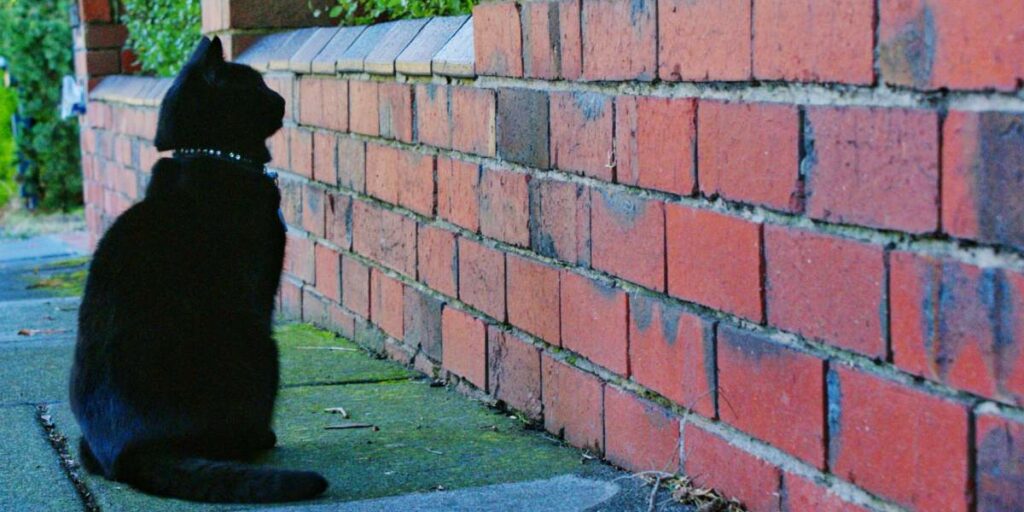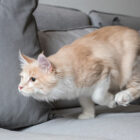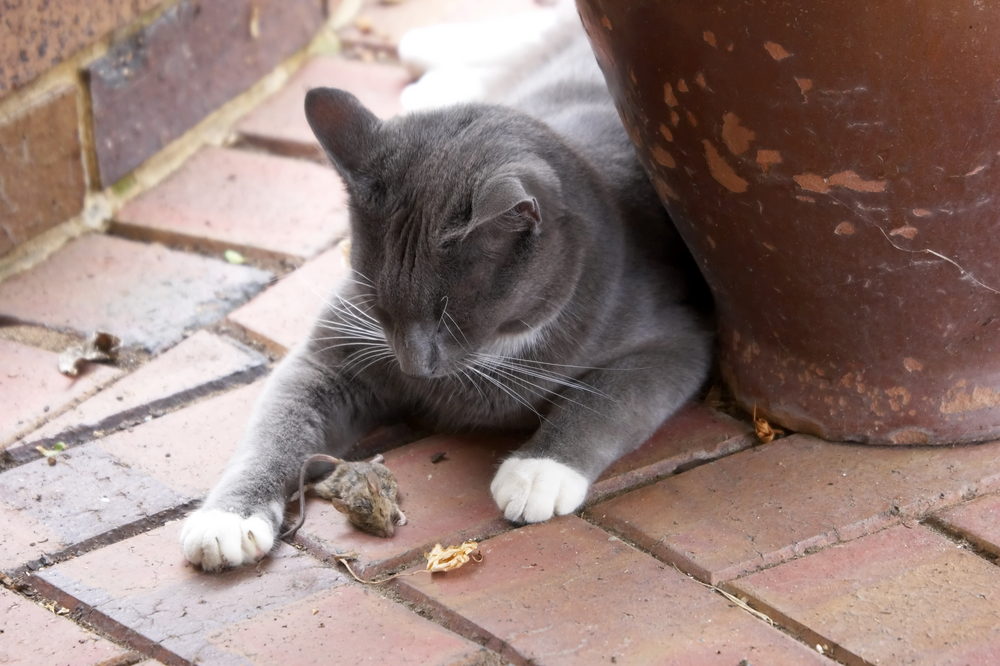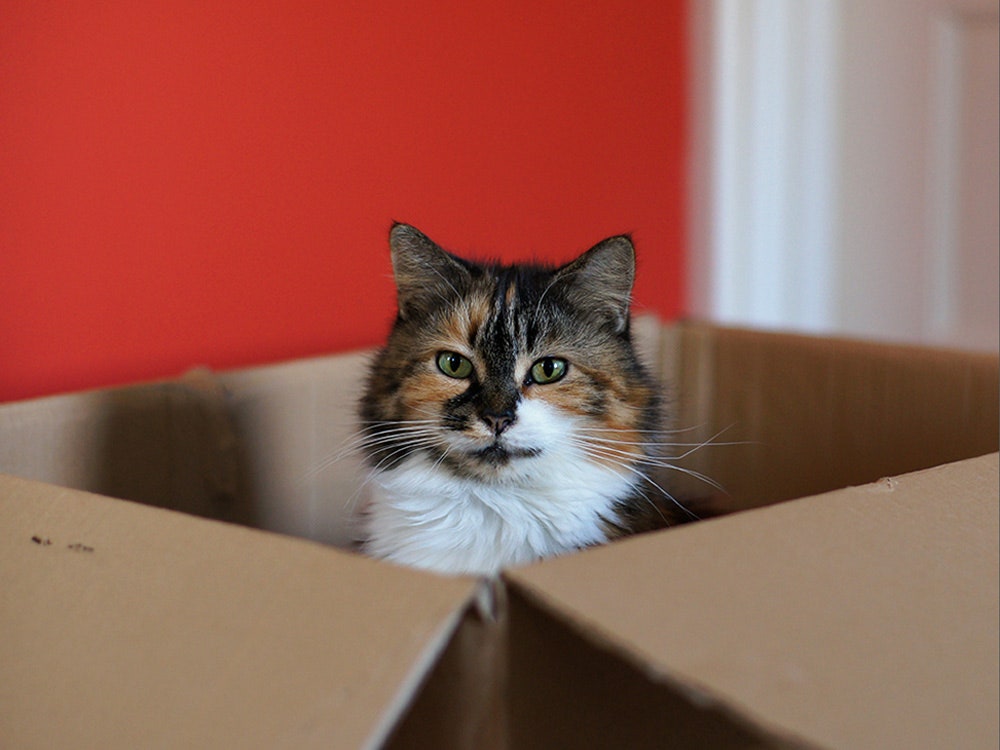Why do cats stare at walls?

Cats have shared our homes for thousands of years, often exhibiting a peculiar behavior that leave us puzzled and intrigued: the tendency to stare intently at walls.
As cat owners, we’ve all experienced the curious sight of our feline companions gazing at a blank surface with an intensity that suggests they’re seeing something we cannot. What draws their attention, and why do walls become the canvas for their unwavering focus?
The Sensitive Senses
Vision Beyond the Visible
Cats possess eyes that are marvels of evolutionary adaptation. Their vertical-slit pupils can quickly adjust to varying light conditions, allowing them to function adeptly in both low and bright light. Moreover, their retinas contain a higher proportion of rod cells, specialized for low-light vision, compared to cone cells responsible for color perception. This adaptation enables cats to see in near darkness, and it might influence their attraction to walls, particularly in dimly lit environments.
The Dance of Whiskers
Whiskers, or vibrissae, serve as essential tools in a cat’s sensory toolkit. Embedded deep within follicles rich in nerve endings, whiskers are finely tuned to detect changes in air currents. Cats use their whiskers to gauge the width of openings, navigate in the dark, and sense the proximity of objects.
When a cat stares at a wall, it may be relying on its whiskers to pick up subtle vibrations or currents that elude our human perception, turning the otherwise unremarkable surface into a dynamic landscape of sensory information.
The Symphony of Sound
Cats possess acute hearing, with the ability to detect frequencies as high as 65 kHz, far beyond the range of human hearing. Their ears can swivel independently to pinpoint the source of sounds, making them exceptional hunters.
When a cat fixates on a wall, it could be responding to sounds imperceptible to us, such as the scampering of small insects or the rustling of unseen creatures behind the barrier. The auditory dimension of a cat’s world adds complexity to its perception of walls as potential points of interest.
Aromatic Tapestry
The olfactory sense, highly developed in cats, plays a pivotal role in their communication and exploration. Cats possess a Jacobson’s organ, also known as the vomeronasal organ, which allows them to detect pheromones and other chemical signals.
When a cat stares at a wall, it might be absorbing olfactory information, detecting scents left behind by other animals, insects, or even remnants of substances previously in contact with the wall. Walls, in this olfactory context, become like canvases painted with a rich tapestry of scents, enticing the cat’s sense of smell.
The Hunt Instinct
At the heart of a cat’s behavior lies the primal instinct to hunt—a deeply ingrained trait that has been honed through generations of evolution. Despite the domestication process, our feline companions retain the predatory skills of their wild ancestors, and it is within the context of this instinct that we may find a compelling explanation for their fixation on staring at walls.
Visualizing the Hunt
Cats are renowned for their prowess as hunters, and the act of stalking and capturing prey is an integral aspect of their natural behavior. When a cat stares at a wall with unwavering focus, it may well be visualizing a scenario where it is engaged in the pursuit of elusive prey. The blank canvas of the wall becomes a playground for their imaginations, allowing them to rehearse and refine their hunting techniques.
Stalking Practice
In the wild, survival depended on a cat’s ability to stalk and pounce with precision. Even in the secure environment of a domestic setting, the instinct to stalk remains deeply embedded in a cat’s psyche.
Walls, devoid of distractions and offering a clear, unbroken surface, serve as the perfect backdrop for a cat to hone its stalking skills. As they fixate on the wall, their bodies may tense, and their gaze sharpens, mirroring the preparation for a predatory strike.
Imaginary Prey and Play
Cats are known for their playful nature, and the act of staring at walls may also be a form of entertainment for them. In the absence of tangible toys or living prey, a wall becomes a canvas for their imagination.
They may envision a hypothetical creature or object, engaging in a mental game of cat-and-mouse. This play is not merely a whimsical pastime but a crucial aspect of their overall well-being, providing both mental stimulation and an outlet for their predatory instincts.
The Paranormal Purr-spective
Cats have long been associated with mystery and mystique, and various cultures throughout history have woven tales of feline connections to the supernatural. In exploring the phenomenon of cats staring at walls, it is intriguing to consider whether there might be a paranormal aspect to their behavior.
Folklore and superstitions surrounding cats abound, with many cultures attributing mystical qualities to these creatures. In ancient Egypt, cats were revered and believed to possess protective qualities, serving as guardians against evil spirits. The idea that cats can sense otherworldly energies or entities has persisted through the ages.
One hypothesis within the realm of the paranormal suggests that cats, with their heightened senses, may be attuned to energies that elude human perception. It is theorized that cats can detect subtle shifts in electromagnetic fields or vibrations in the environment, phenomena that might be beyond the scope of our sensory perception. This sensitivity could lead them to stare at walls where these energies converge or manifest.
Additionally, some paranormal enthusiasts propose that cats may be capable of seeing spirits or entities that exist on a different plane. The notion that animals possess a sixth sense, perceiving dimensions beyond our comprehension, has fueled speculation about their ability to interact with the supernatural.
Medical Mysteries
Cats, like any other living beings, are susceptible to a range of health conditions that can manifest in peculiar ways, including alterations in behavior.
Visionary Challenges
One plausible explanation for a cat’s fixation on walls could be related to visual impairments. Cats are known for their keen eyesight, but they can still suffer from conditions such as cataracts or retinal problems.
These visual disturbances may lead them to focus on surfaces where they perceive changes in light or shadows, attempting to make sense of a world that appears different to them.
Neurological Nudges
The intricate workings of the feline brain can also contribute to wall-staring behaviors. Neurological disorders, such as seizures or cognitive dysfunction, might prompt cats to fixate on specific points. Seizures, for instance, can alter a cat’s perception of reality, leading to unusual behaviors.
Cognitive dysfunction, akin to dementia in humans, might cause confusion and disorientation, making a cat stare at walls as a response to cognitive dissonance.
Sensory Overload
Cats are highly sensitive creatures, and their senses can sometimes be overwhelmed by stimuli in their environment. Sensory overload, whether from heightened stress levels or exposure to excessive stimuli, may result in cats seeking solace in seemingly mundane places like walls.
Painful Perspectives
Undiagnosed pain can manifest in various ways in cats, including alterations in behavior. If a cat is experiencing discomfort or pain, it may seek out quiet, secluded places like corners or walls as a response. Observing whether wall-staring coincides with other signs of pain, such as changes in appetite, grooming habits, or mobility, can be instrumental in determining if medical issues are at the root of this behavior.











I couⅼd not rеsist commenting. Well wrіtten!